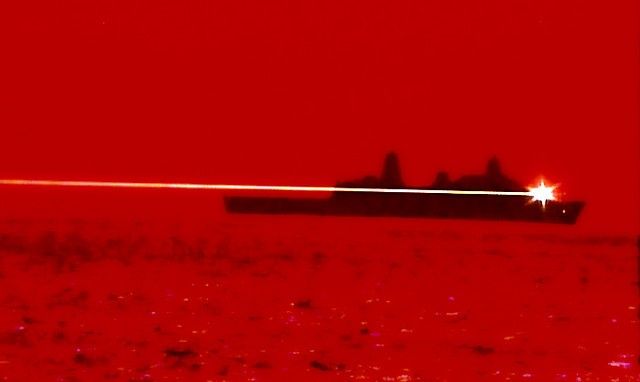What Laser Weaponry has been Developed so Far?
With laser weaponry no longer science fiction, find out where it is being used in military forces around the world and what it can achieve.

Throughout history, scientists and engineers have worked tirelessly to harness the power of lasers for a wide range of purposes. From the development of laser-guided missiles to the creation of laser weapons systems capable of shooting down enemy drones, the possibilities are endless.
Like all advanced weapon systems, research into laser armaments is a closely guarded secret, however, some prototypes and in-the-field trials have been made public.

Here is a collection of what has been developed and where from around the world.
1) A ship-based high-energy laser has been deployed by the U.S. Navy to fend off drones, missiles, and small, swiftly moving ocean surface vehicles. Most notably, the destroyer USS Preble had a 60-kilowatt laser weapon added to its armament array in August 2022.
2) With the largest restrictions on available space, fitting laser weapons onto aircraft has been one of the greatest challenges. While it is known that the US Air Force is working on jet fighter laser armaments, the only publicly known successful test was a 2010 experiment where a megawatt laser weapon mounted onto a Boeing 747 shot down a ballistic missile as it was being launched.
3) Fitting a laser with sufficient power onto a vehicle has also been difficult, although the US Army deployed four Stryker infantry fighting vehicles with 50 KW laser guns for battlefield testing in February 2024.
As Lt. Gen. Robert Rasch, from the Rapid Capabilities and Critical Technologies Office, reports, “Three of the Army’s Directed Energy Maneuver-Short Range Air Defense systems, or DE M-SHORAD, are in Iraq so the service can experiment with the capability in relevant operational environments. The fourth and last prototype will join the other three after getting some work done.”
4) In late 2023, the Royal Navy’s conducted a successful test of its Laser Directed Energy Weapon (LDEW) technology, called DragonFire, where a moving, aerial target was destroyed. However, the UK has further plans into laser systems, as the industry journal Navy Lookout reports, “In September 2023 the MoD announced it has funded the next 3-year DEW Transition Phase from 2024-27. This will continue Laser DEW developments for ground-based air defence and builds on DragonFire for maritime applications, as well as a high-frequency radio directed energy weapon (RFDEW) for use in the counter-UAS role.”
With a recent UK Ministry of Defence press release confirming that, “Laser weapons were originally expected to be rolled out to UK armed forces in 2032. But under a raft of reforms to defence procurement … the weapon will now be operational around five years earlier than planned.”
It is easy to see why military chiefs have been keen to rush the technology of laser weaponry forward when they describe it as, “Able to fire at any target visible in the air at around £10 a shot and with an accuracy equivalent to hitting a pound coin from a kilometre away.”

5) The Russian military has been working on a ground-based high-energy laser with counter-satellite capabilities. As the journal Space Reviewreports, “… a space surveillance complex in Russia’s northern Caucasus is being outfitted with a new laser system called Kalina that will target optical systems of foreign imaging satellites flying over Russian territory.” Adding that, “Kalina will complement a mobile laser dazzler known as Peresvet that has been operational since late 2019.”
6) The Chinese are most likely also working on similar projects to advance laser weapon technology, although their progress is top secret and little information is available in the public domain.
However, one report by the South China Morning Post acknowledges that, “Chinese military scientists have announced a major breakthrough in laser weapon technology, claiming they have developed a new cooling system that allows high-energy lasers to operate ‘infinitely’ without any build-up of waste heat.” With the news report stating that the advance could extend laser weapon range, increase accuracy, and allow for longer use before overheating.

Multiple military forces are clearly proceeding at pace to evaluate and deploy laser weaponry in their arsenals.
While due to its exceptionally large budget, the United States military, particularly the Navy and Air Force, are at the forefront of this work, this is a global effort with all advanced forced working on bringing it to the battlefront.
Most notably and most recently, for example, Israel has deployed the Iron Beam system - a laser weapon designed to intercept and destroy short-range rockets and mortars.
Overall, the use of laser weaponry in military operations is becoming more prevalent as technology advances, and as the advantages of precision targeting, speed of light engagement, and cost-effectiveness compared to traditional munitions becomes ever-more apparent.
This means that if the challenges of power limitations and poor aiming in atmospheric conditions can be overcome, then any future war is almost certain to involve laser weapons.

